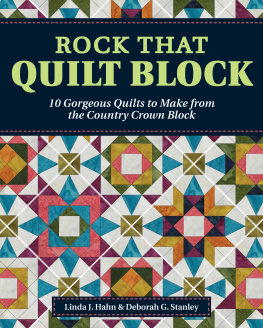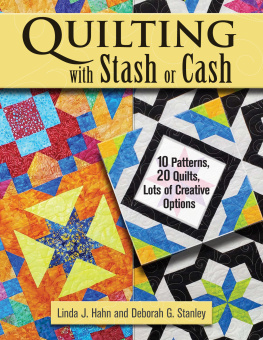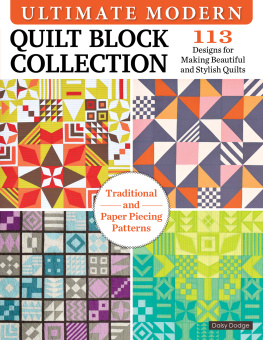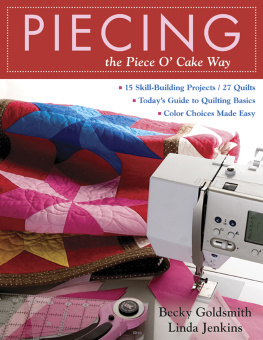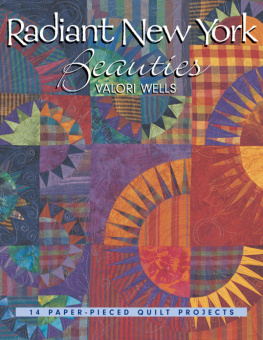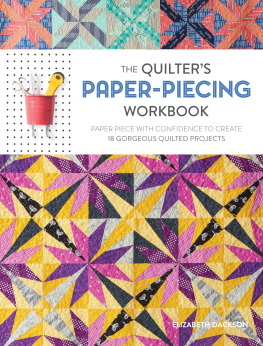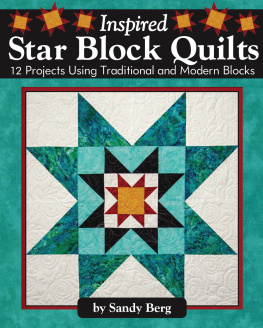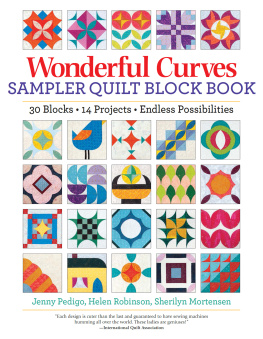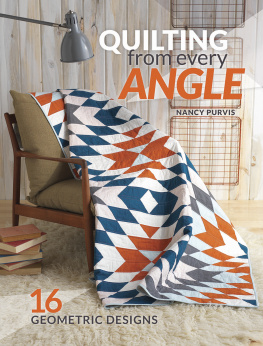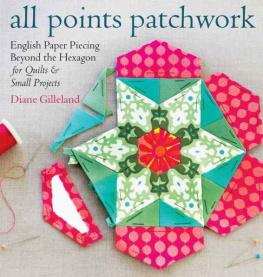Contents

New York Beauty Quilts
ELECTRIFIED
By Linda J. Hahn and Deborah G. Stanley
Landauer Publishing (www.landauerpub.com) is an imprint of Fox Chapel Publishing Company, Inc.
Copyright 2019 by Linda J. Hahn, Deborah G. Stanley and Fox Chapel Publishing Company, Inc., 903 Square Street, Mount Joy, PA 17552.
Project Team:
Vice PresidentContent: Christopher Reggio
Editors: Laurel Albright/Sue Voegtlin
Copy Editor: Laura Taylor
Designer: Laurel Albright
Photographer: Sue Voegtlin
ISBN: 978-1-947163-15-7
eISBN: 978-1-607659-49-5
All rights reserved. No part of this book may be reproduced, stored in a retrieval system, or transmitted in any form or by any means, electronic, mechanical, photocopying, recording, or otherwise, without the prior written permission of Fox Chapel Publishing, except for the inclusion of brief quotations in an acknowledged review and the enlargement of the template patterns in this book for personal use only. The patterns themselves, however, are not to be duplicated for resale or distribution under any circumstances. Any such copying is a violation of copyright law.
Note to Professional Copy Services The publisher grants you permission to make up to ten copies for any purchaser of this book who states the copies are for personal use.
Library of Congress Cataloging-in-Publication Data
Names: Hahn, Linda, author. | Stanley, Deborah G., author.
Title: New York beauty quilts electrified / Linda J. Hahn and Deborah G. Stanley.
Description: Mount Joy, PA: Landauer Publishing, [2019]
Identifiers: LCCN 2019008565 | ISBN 9781947163157 (pbk.)
Subjects: LCSH: Patchwork--Patterns. | Quilting--Patterns. | New York beauty quilts.
Classification: LCC TT835 .H2578 2019 | DDC 746.46/041--dc23
LC record available at https://lccn.loc.gov/2019008565
We are always looking for talented authors. To submit an idea, please send a brief inquiry to .
This book has been published with the intent to provide accurate and authoritative information in regard to the subject matter within. While every precaution has been taken in the preparation of this book, the author and publisher expressly disclaim any responsibility for any errors, omissions, or adverse effects arising from the use or application of the information contained herein.
For a printable PDF of the patterns used in this book, please contact Fox Chapel Publishing at , with 9781947163157 and New York Beauty Quilts Electrified in the subject line.
Table of Contents


Introduction
When I heard Linda Hahn would be writing her next New York Beauty book with her dear friend, Deborah Stanley, I was excited. New York Beauty Quilts Electrified is the third New York Beauty book from Linda, and like the other two books it explores creative designs incorporating the traditional block pattern. In this book, Linda and Deborah showcase the versatility of the basic New York Beauty block by using it in new ways.
Our love of New York Beauties is what we share in common. A few years ago I wrote a book covering the history of the patternNew York Beauty, Quilts from the Volckening Collectionand the last quilt in the book was a design called Bensonhurst Blooms from Lindas New York Beauty Diversified book.
The creative use of blocks as pictorial elements represented the last word in New York Beauties, but there was much more to the story.
New York Beauty quilts first appeared in the middle nineteenth century, when the burgeoning American textile industry gave quilt makers the freedom to explore complex, geometric patchwork designs using a surplus of new fabric.
The radiant sunburst motif was not known as New York Beauty at first. Before newspapers and magazines started publishing and naming patterns around the turn of the twentieth century, quilt block patterns did not really have standardized names at all.
New York Beauty was the name of a pattern introduced by Mountain Mist in 1930. The company included patterns as a premium, to promote the sales of rolls of quilt batting. Unfortunately, the designers took creative license with the historical account about the inspiration quilt, saying the pattern originated in 1776. It may have seemed plausible at the time, but today we know it was not true.
Throughout history, New York Beauty quilts shared specific visual elements in common, such as technically challenging curved seams and sharp points. Originally these elements were hand pieced without foundation, and thats the way it was for roughly 150 years.
In the late 1980s and early 1990s, several artists began successful experimentation with paper foundation piecing for the New York Beauty and other complex patterns. Thats when the motif started to significantly evolve. Artists introduced bold new fabrics and colors, created innovative designs and gave new life to the traditional block pattern.
A hundred years from today people will glance back at the explosively creative period of quilt making in the late 20th and early 21st centuries and they will look at this book, New York Beauty Quilts Electrified and see the most innovative quilt makers of our time having lots of fun with colorful, imaginative quilts.
Bill Volckening
Author of New York Beauty, Quilts from the Volckening Collection
Award-winning blog Wonkyworld: collecting quilts from the perspective of a 21st-century collector
Definitions
Before you begin, please read through the following definitions of the various terms and abbreviations that we will be using throughout this book.
WOF: Width of Fabricselvage to selvage usually 40" to 42" (101.6 to 106.68cm) of usable fabric
HST: half-square triangle
RST: right sides of the fabrics together
RSU: right side of fabric up
RSD: right side of fabric down
Connector: small square of fabric sewn on the diagonal to create a triangle shape on a larger square or rectangle (sometimes referred to as a stitch and flip corner)
Arc Foundation: the paper part of the New York Beauty block
Spire: the points in the New York Beauty block arc foundation
Background Spire: the larger points in the New York Beauty block arc foundation
Pie: the pie-shaped section of the New York Beauty block
Background: the top of the New York Beauty block
Cutaway: the piece of fabric that you cut out from behind the spires as you piece the arc foundation. Use these pieces for mini New York Beauties.
General Hints
Stitch Length
If you are using regular copy paper or vellum for your project, you will need to shorten your stitch length. You dont want to shorten it so much that if you end up having to rip out stitches, you also rip the fabric. If you are using the recommended foundation paper, there is no need to worry about shortening the stitches since you won't be removing the paper. You can use the default stitch on your machine.
The Piecing Factor


